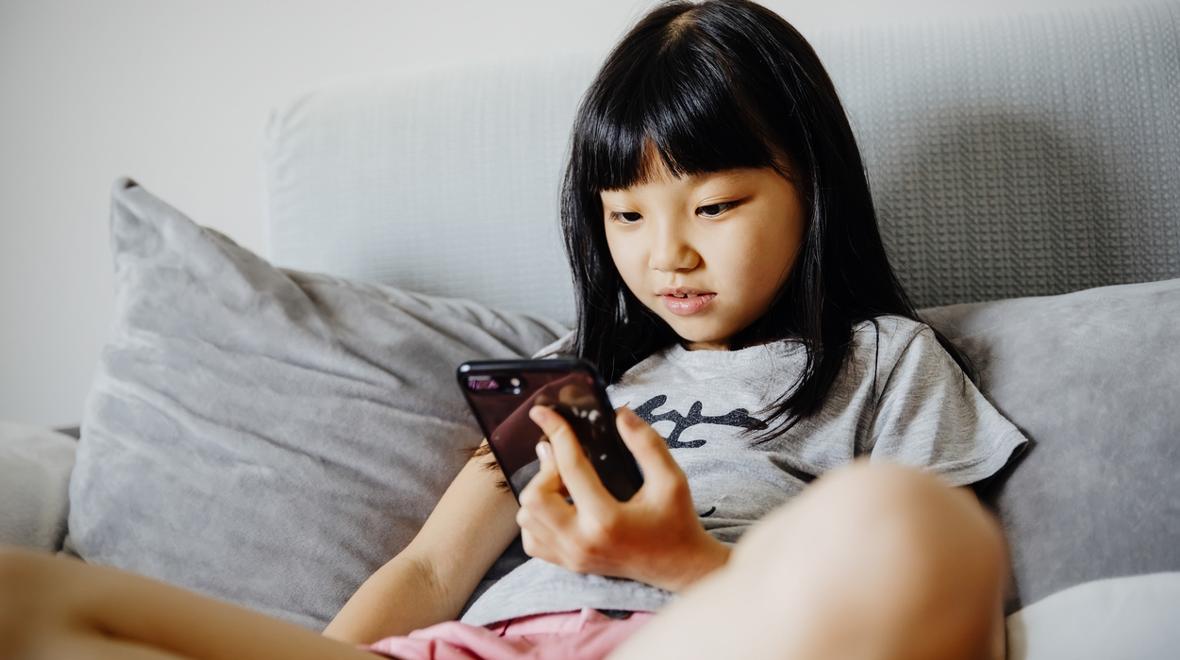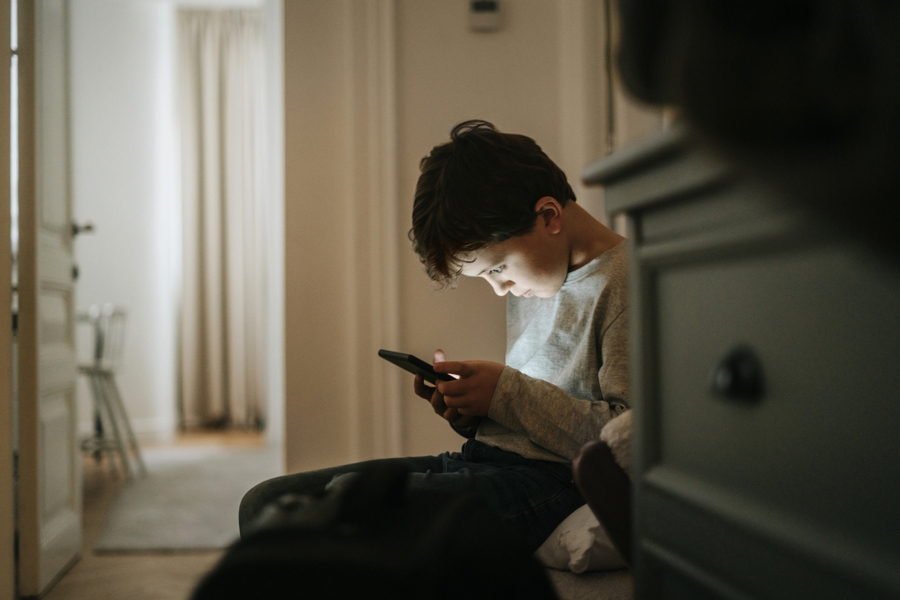
Photo:
iStock
Picture it: Your kids and most of their peers don’t get smartphones until they’re high schoolers. Phones aren’t allowed in schools. Teens can’t legally access social media until age 16. Most of their social time is spent playing outside, using their imaginations, managing risky situations, and developing healthy relationships and independence in the real world, not online. How does this sound?
This might seem like some wacky vision of a Luddite utopia, but it’s gaining traction as the latest big thing: a mission to rescue kids from the black hole of social media and a phone-focused childhood. Even the U.S. surgeon general has called on Congress to require warning labels on social media platforms, labels similar to the ones required on cigarette cartons and packs. The fact that social media use is hurting our kids is not controversial anymore — it’s a bipartisan issue we can all agree on.
I’m an enthusiast for this mission because I listen to parents for a living. Whether in my role as clinical psychologist, parent educator or speaker at parenting conferences, I hear parents share their horror stories about their kids’ excessive smartphone use. They describe kids glued to their phones, captivated by social media feeds and throwing fits over parental limits. Some of them report deep levels of suffering, such as sleep deprivation, academic slumps, mental health issues and despair about their futures.
Although this hijacking of kids’ attention has been developing for more than a decade, the current leader in the movement to resist it is Jonathan Haidt, social psychologist and author of “The Anxious Generation: How the Great Rewiring of Childhood Is Causing an Epidemic of Mental Illness.”
|
For more support and resources surrounding the youth mental health crisis, screen time and social media, and the importance of play, visit ParentMap’s Antidote for the Anxious Generation page. |
The harm of too much digital media
Perspectives on what Haidt calls the “phone-based childhood” are all over the news. They include opinions from parents, teachers, policymakers and tech experts. My own perspective, rooted in child development, focuses on what is lost when 5–10 hours a day are spent looking at a screen.
It was about 2015 when I saw my first teenager in therapy for excessive digital media use. Johnny (not his real name), a high school junior, had been a soccer star and scholar. Despite his parents’ attempts to limit his “digital daze,” Johnny became obsessed with online Texas Hold’em. He made $20,000 playing online poker in three months and ultimately dropped out of school so he could gamble full-time. Despite losing his family, girlfriend and college opportunities, Johnny reveled in “making bank.”

Although atypical, Johnny’s experience illustrates the rapid derailment of a childhood brought on by the dopamine high induced by digital media overuse. Dopamine is the neurochemical that fuels the reward pathway in the brain. It’s responsible for the motivational drives that helped humans survive over millennia. When it’s triggered, our brains register, “I want more! Go get more!” This dopamine pathway drives us to seek food, warmth, sex and other comforts, sometimes to excess.
For teens, the dopamine release obtained from “likes,” games, funny clips, prurient images and endless entertainment drives the brain to want more. Johnny just happened to make a lot of money to boot.
Common Sense Media documented that kids between the ages of 8 and 12 spend an average of 5.5 hours per day on screens, while teens (ages 13–18) connect around 8.5 hours daily. A Pew survey found that nearly 100 percent of American teens have a smartphone, with roughly half reporting they’re online “constantly.”
Research has linked social media use to increased depression, anxiety, disordered eating and suicide rates. Haidt’s book provides compelling evidence for the causal link between social media use and the decline in teen mental health, citing numerous correlational, longitudinal and experimental studies. Graphs showing how these mental health issues skyrocketed between 2010 and 2015 can be found on “The Anxious Generation” website. It is worth noting that this mental health decline started before the pandemic.
The great kidnapping — right under our noses
Many parents had no idea they were participating in the biggest technological heist and experiment on children in history. With the advent of the smartphone, children merely had to click a box claiming they were 13, and millions of companies could steal their personal data and bombard them with notifications about exciting, alluring, and dangerous sites and products.
While some social media consumption is harmless and can be beneficial, problems proliferate when consumption exceeds a couple of hours a day and that media is passive, addictive, asynchronous, performative and riddled with harmful content. In this new social landscape, kids are not communicating directly with people they know and to whom they are accountable for their decorum. As with most social media use, kids interact with large groups of strangers and lack any control over where their personal information and posted images will go.

As a clinician, I notice that one of the worst parts of excessive social media use is the cost of lost opportunities: The time lost to vegging out with screens is time kids aren’t engaging in healthy activities. Children used to play independently and participate in sports, music, hobbies and art; hold part-time jobs; and volunteer after school.
I routinely recommend that parents insist their children participate in after-school in-person activities. It’s hard to use a phone if you’re playing basketball, assisting at a food bank or working at a coffee shop. But parents often feel it’s “too late” to make such requirements and fear their relationships with their children would not survive making phone access contingent on offline activities. Kids insist social media is “where their friends are,” and for teens, peer inclusion is of the utmost importance.
However, there is another component to kids’ emotionally outsize responses to parental limits on phone use. Lacking some of the social and emotional skills needed to join groups and meet obligations, kids are anxious and avoid challenges. The contradiction of wanting the dopamine reward that social media gives and avoiding the distress of facing challenges generates powerful resistance to real-world involvement.
Parents recount stories of full-out meltdowns after digital shutdowns. Once the dopamine-releasing reward systems in their brains are established, kids crave it and will fight for the fix. They also often fight to avoid new and daunting endeavors typically encountered in daily life.
The importance of engaging with the real world
From a developmental perspective, children and teens need embodied, play-based childhoods to optimize social, emotional and academic learning. Over millions of years, humans evolved to distinguish between things that are good or bad for us through real-world interactions. For example, eating toxic foods made us sick so we learned to avoid them. The accumulation of these learned experiences, referred to as the mind-body connection, allow us to navigate the world safely, deftly and successfully. Replacing embodied experiences with the digital versions offered on social media is not an equal exchange.
In 2008, Lenore Skenazy started the free-play movement and, together with Haidt and two others, founded Let Grow, which provides research and resources for motivating parents to get their kids outside and playing independently. She and others have made the case that kids benefit when they take risks, learn from mistakes, make friends, engage in group play and settle squabbles without adult direction.
Brains are wired based on what we learn through millions of tiny interactions. What we think, do and practice determine which neural circuits will become established and which ones will weaken. Neuroscientists often explain this phenomenon with the simple statement, “Neurons that fire together, wire together,” a concept that originated with Canadian psychologist Donald Hebb.

During this rapid, sensitive and unique period of adolescent brain development, this wiring process is crucial. By age 13, the teen brain undergoes remodeling and becomes more sensitive to rewards and social influences. Kids take risks and seek challenges that prepare them to leave the nest. They need the 5.5 hours per day currently usurped by social media use to learn these essential life skills.
Parents’ brains have been shaped by digital media and constant smartphone access as well. Notifications feed us alerts about disasters all over the world, contributing to a sense that dangers and threats are everywhere all the time. Parents feel a false sense of security by keeping their children inside. Over time, parents have become less aware of the relative dangers of time spent indoors, where social media platforms can diabolically snatch kids’ total attention with eye candy that ultimately makes them sick.
The nature of ‘slow creep’
As with desensitized attitudes toward climate change and gun violence, the phone-based childhood has developed through a slow creep of bad policies and a dearth of useful information. Humans get used to conditions, good and bad. We have become habituated to the loss of family time sucked away by media. We’re down to a few minutes of face-to-face conversation per day, yet we wonder why we feel more loneliness and alienation.
First, we lost neighborly connection, civic membership and exposure to nature when we stayed home to watch TV. With the saturation of internet access, we stayed home more frequently, and “connection” was gained through electronic means, not by walking in the neighborhood or attending a place of worship. Tech life advanced, and a community based in the real world retreated.
To a significant degree, health-compromising risk-taking among children and teens has always been moderated by parents, laws and policy. We’ve known that kids need guardrails to protect them from excessive risk-taking related to cars, substance use and unsafe sexual behaviors. We just weren’t aware of the insidious dangers that creep into their lives through smartphones.
When discussing the dangers of social media, a common counterargument is that technology is here to stay, and you can’t put the genie back into the bottle. However, as with cars, social media needs safety features and regulations. Teen morbidity and mortality rates have improved with raising the legal age for driving with peers, installing air bags and establishing designated drivers as a social norm. Because kids have had unrestricted access to smartphones, we are now playing catch-up with a harmful product that has lacked adequate safety measures.

Yet social media also has provided a means for making positive connections. Teens have found solace and reassurance from others with similar identities and challenges. They have learned new skills such as chess or guitar, and throughout the pandemic, benefited via remote schooling and virtual socializing. But far too often, girls fall prey to harmful influences and cruelty on social media, and boys, to pornography and gaming.
Pushing the tipping point of the social media epidemic
As with most epidemics and fads, tipping points happen, and trends recede. The excessive use of smartphones among children and early adolescents can become a virus in remission if we adopt Haidt’s proposed agenda.
Haidt wants to institute four new norms: no smartphones before high school; no social media before 16; phone-free schools; and more independence, free play and responsibility in the real world. He wants to rescue kids from the clutches of Big Tech by changing social norms, galvanizing parents to collective action and promoting more offline socializing among kids.
Haidt’s policy ideas take pressure off parents to do all the hard work of fighting the viral load of phone use. Some families don’t have problems with smartphones because they take a firm stance of banning them early on, or because their children are temperamentally self-disciplined. But many more families are stressed out, cave in to kids’ pleas and fall into habits of excessive use. It’s time for parents to get some help from schools, policymakers and each other.
In many states, schools have banned cell phone use, and many others plan to implement similar policies next year. Teachers know that learning can’t take place when students are constantly engaged in phone use. Flip phones and smartwatch devices can allow parental contact without supplying a constant stream of data.
Ireland and Germany have set the digital age of consent at 16, and France, at 15. Age verification is possible with technical adjustments. Although not foolproof, policy changes will improve teen health, similar to improvements made when the sale of alcohol and nicotine to teens became regulated.
Why collective action and policy change? Kids fly into cyclonic fits when parents try to cut the tether to the phone, because they fear missing out and losing contact with their friends. But if their friends aren’t in the cyber supermall, there’s nothing to miss. A critical part of changing parenting practices and laws simultaneously is moving in unison on this mission.
Are you reading this on a screen? I’m glad, but now it’s time to go outside and play. Here’s hoping your kids are outside, too, playing independently.

More ways to handle screen-time: |











